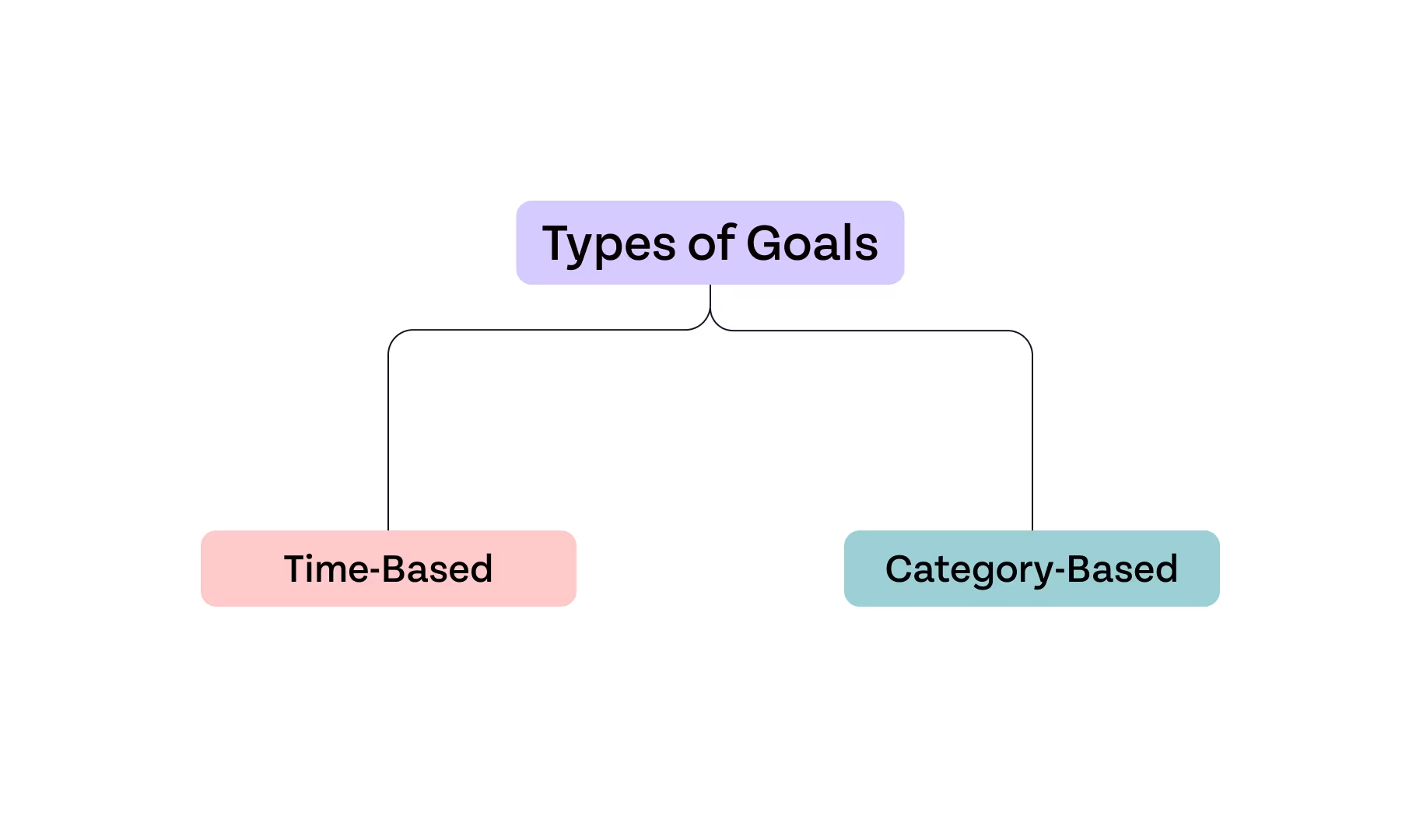Goals and objectives work together to drive success, yet they serve distinctly different purposes. A goal represents a broad, long-term outcome you want to achieve, while an objective defines specific, measurable actions needed to reach that goal.
Time and Scope Differences
Goals stretch across longer time periods and provide broad direction for your business activities. Furthermore, objectives break down into shorter timeframes with precise targets. When you set a goal, you're creating a vision of where you want to go, whereas objectives map out the exact steps to get there.
Where Goals are Used?
Goals shape your organization's future direction and appear in:
- Mission statements and company vision
- Yearly strategic planning
- Business growth initiatives
- Company culture development
Specifically, goals direct energies toward skillful performance and promote cooperation within teams sharing common values. They support the perception of being in control and making meaningful progress in focused areas.
Where Objectives are Used?
Objectives function as stepping stones toward goal achievement. In contrast to goals, objectives always answer five crucial questions:
- Who will complete the task
- What needs to be done
- When it should be completed
- Why it matters
- To what standard it must be performed
Objectives shine in project management, where they define measurable actions and create accountability. Additionally, they help track progress through key performance indicators (KPIs) and provide clear metrics for success.
The relationship between goals and objectives resembles a roadmap - goals point to the destination, while objectives provide turn-by-turn directions. Through this partnership, objectives make goals actionable and achievable through specific, time-bound steps.
Setting goals requires understanding their different types and how they fit into your overall plan. Primarily, goals fall into two main classifications: time-based and category-based.

Time-based goals divide into three distinct horizons.
Short-term goals typically span up to one year and deliver quick results to boost your motivation.
Medium-term goals generally take six months to five years to achieve.
Long-term goals shape your future vision and usually extend beyond a year.
Here are the different category-based goals.
- Career Goals: Focus on professional growth, skill enhancement, and career advancement
- Financial Goals: Cover debt reduction, savings, and investment planning
- Health Goals: Address physical wellness, mental health, and lifestyle improvements
- Personal Development Goals: Include learning new skills and intellectual growth
- Social Goals: Target relationship-building and community connections
Notably, short-term goals often serve as stepping stones toward long-term achievements. Consequently, you can focus on multiple short-term goals simultaneously, while maintaining only two or three long-term goals to avoid feeling overwhelmed.
Moreover, the flexibility of these goal types varies significantly. Short-term goals tend to be less flexible due to closer deadlines, essentially requiring more immediate action.
On the other hand, long-term goals offer greater adaptability, allowing you to adjust your path as circumstances change.
Understanding these different types of goals helps you create a balanced approach to achievement across various life areas. Each type serves a unique purpose in your personal and professional development journey.
We can categorize objectives based on their purpose and scope. Primarily, objectives fall into three fundamental learning domains: cognitive, psychomotor, and affective.
Cognitive objectives focus on developing knowledge and understanding. These range from simple recall of facts to complex problem-solving and critical thinking. Whenever you demonstrate comprehension, apply concepts, or analyze information, you're engaging with cognitive objectives.
Psychomotor objectives center on physical movement, coordination, and motor skills. These involve tasks that require precision and control—such as typing at a specific speed, dribbling a ball, or using technical instruments effectively.
Affective objectives deal with emotions, attitudes, and values. They aim to nurture appreciation, motivation, empathy, and openness. For example, showing enthusiasm for collaborative work or demonstrating respect for diverse perspectives reflects affective engagement.
Beyond the learning domains, we also group objectives based on their function within an organization:
- Performance objectives track individual or team accomplishments and progress.
- Strategic objectives define the long-term direction of the organization and typically span two to four years.
- Operational objectives support daily, weekly, or monthly functions. These shorter-term goals act as building blocks that move teams toward achieving broader strategic aims.
Understanding the different types of objectives allows you to design more balanced and purposeful plans. Each type plays a crucial role—from guiding immediate actions to shaping long-term growth—ensuring your efforts stay focused and aligned with overall success.
Measuring progress toward your goals and objectives takes more than a checklist—it calls for purpose, structure, and ongoing attention. Here’s how to do it effectively:
1. Use Key Performance Indicators (KPIs)
KPIs are quantifiable metrics that clarify exactly how you’ll track progress. They transform broad ambitions into concrete, measurable realities by providing clear benchmarks for success.
- Why KPIs Matter: They bring accountability and precision to performance management, ensuring everyone knows what good looks like.
2. Apply Objective Measurements
Objective measures focus on tangible, countable results that can be directly attributed to employee or team performance. These work best when comparisons are straightforward and the data speaks for itself. For example, in a sales context, you might track:
- Revenue generated
- Customer acquisition cost
- Conversion rate
- Customer retention rate
These metrics paint a clear, data-driven picture of advancement, but effectiveness increases when complemented by additional tools.
3. Combine Objective and Subjective Assessments
While numbers rarely lie, they don’t always tell the whole story. Integrating subjective assessments—such as manager evaluations or 360-degree feedback—brings context to the numbers and acknowledges circumstances that may affect performance. This blended approach enables fairer, more holistic appraisals.
4. Leverage the SMART Framework
The SMART framework—Specific, Measurable, Attainable, Relevant, Time-bound—ensures every goal is both ambitious and achievable. SMART goals break big-picture objectives into actionable components, making it easier to set milestones and celebrate incremental progress along the way.
5. Document and Track Progress
Diligent documentation of goals, tasks, milestones, and deadlines is essential. This creates a transparent roadmap, highlights achievements, and exposes areas needing attention. Regular review meetings provide structure for celebrating wins and recalibrating efforts where necessary.
6. Set Relevant KPIs at Every Level
Ensure your KPIs are meaningful not only company-wide, but within each department and team. By customizing KPIs for specific functions, you make measurement more precise and impactful—tailoring accountability to where it matters most.
7. Compare Results Against Benchmarks
Establish target thresholds—whether from internal goals, past performance, or industry standards. Comparing actual results to these benchmarks helps managers identify areas falling short and address them promptly, maintaining steady progress toward all objectives.
Goals power progress—both in business and personal life—and setting clear examples helps clarify their impact.
Business Goals
Business goals usually target growth and development. For instance, a company might aim to increase its market share by 15% within five years, launch three innovative products over three years, or meet specific revenue milestones. These goals provide direction and measurable targets to drive organizational success.
Personal Development Goals
Personal development goals focus on individual growth. Common examples include learning a new language, mastering a musical instrument, or completing challenging physical feats like running a marathon. Many people also set goals to write novels, buy a home, or reach specific fitness benchmarks. These aims foster continuous self-improvement and fulfillment.
Career Advancement Goals
Career goals often intertwine with financial objectives and professional growth. Examples of long-term career aspirations include:
- Finding your dream job
- Improving work-life balance
- Mastering new job skills
- Becoming a company executive
- Working internationally
- Transitioning to a new career path
- Achieving career stability
- Reaching a specific salary target
- Expanding your professional network
- Mentoring colleagues
- Pursuing further education
- Becoming an industry expert
Many professionals also focus on building multiple income streams or developing emergency funds as part of their financial security plans.
Health and Wellness Goals
Health goals promote well-being and physical vitality. Typical examples include maintaining an ideal body weight through regular exercise, practicing daily meditation, completing demanding athletic events like triathlons, and adopting healthy eating habits based on mindful nutrition.
By setting clear, specific goals in these areas, individuals and organizations can chart purposeful paths toward lasting success and well-being.
Objectives help translate your ideas and needs into actionable and measurable business outcomes.
Economic Objectives
These focus on financial performance, such as reducing advertising costs by 20% or achieving specific revenue growth targets. By setting clear financial goals, organizations drive profitability and cost efficiency.
Social Objectives
Social objectives target customer experience and market presence. Examples include cutting average customer wait times from eight to four minutes or boosting brand awareness through targeted campaigns on multiple social media platforms. These objectives strengthen customer relationships and elevate brand visibility.
Human Objectives
Human objectives emphasize workforce development and employee growth. Organizations often set goals like hiring two chemical engineers by the end of Q2 or conducting monthly lunch-and-learn sessions. These objectives also commonly include enhancing professional development programs and implementing leadership training to foster talent.
Organic Objectives
Organic objectives center on innovation and improving business health. For example, a company might aim to improve software product efficiency by 15% or launch two new product prototypes in Q4, incorporating feedback from at least 100 potential customers. These goals fuel continuous innovation and operational excellence.
Performance Metrics
Successful organizations define specific, measurable targets to track progress. Examples include:
- Increasing monthly revenue to £150,000
- Growing mailing list subscribers to 50,000
- Achieving email open rates of 20%
- Reducing departmental costs by 5% without sacrificing service quality
In practice, these objectives ensure focused efforts and accountability. For example, customer service teams might aim to reduce call wait times to under one minute, while marketing teams work to increase website visitors to 100,000. Clear, measurable objectives provide the direction necessary to achieve broader organizational ambitions.
Bridge Your Goals and Objectives Today
Understanding the differences between goals and objectives empowers individuals and organizations to align their efforts with success. Goals provide the vision, while objectives map out actionable steps to achieve that vision, ensuring progress remains measurable and focused. When effectively combined, they create a powerful roadmap to achieve both personal and organizational milestones.
Take Action with ThriveSparrow
Elevate your goal-setting game with ThriveSparrow, the ultimate platform to seamlessly manage and track goals and objectives. Whether it's crafting SMART goals or aligning objectives with your team, ThriveSparrow provides the tools you need for success.

Request a Demo Today and transform your goal-setting strategy.
















